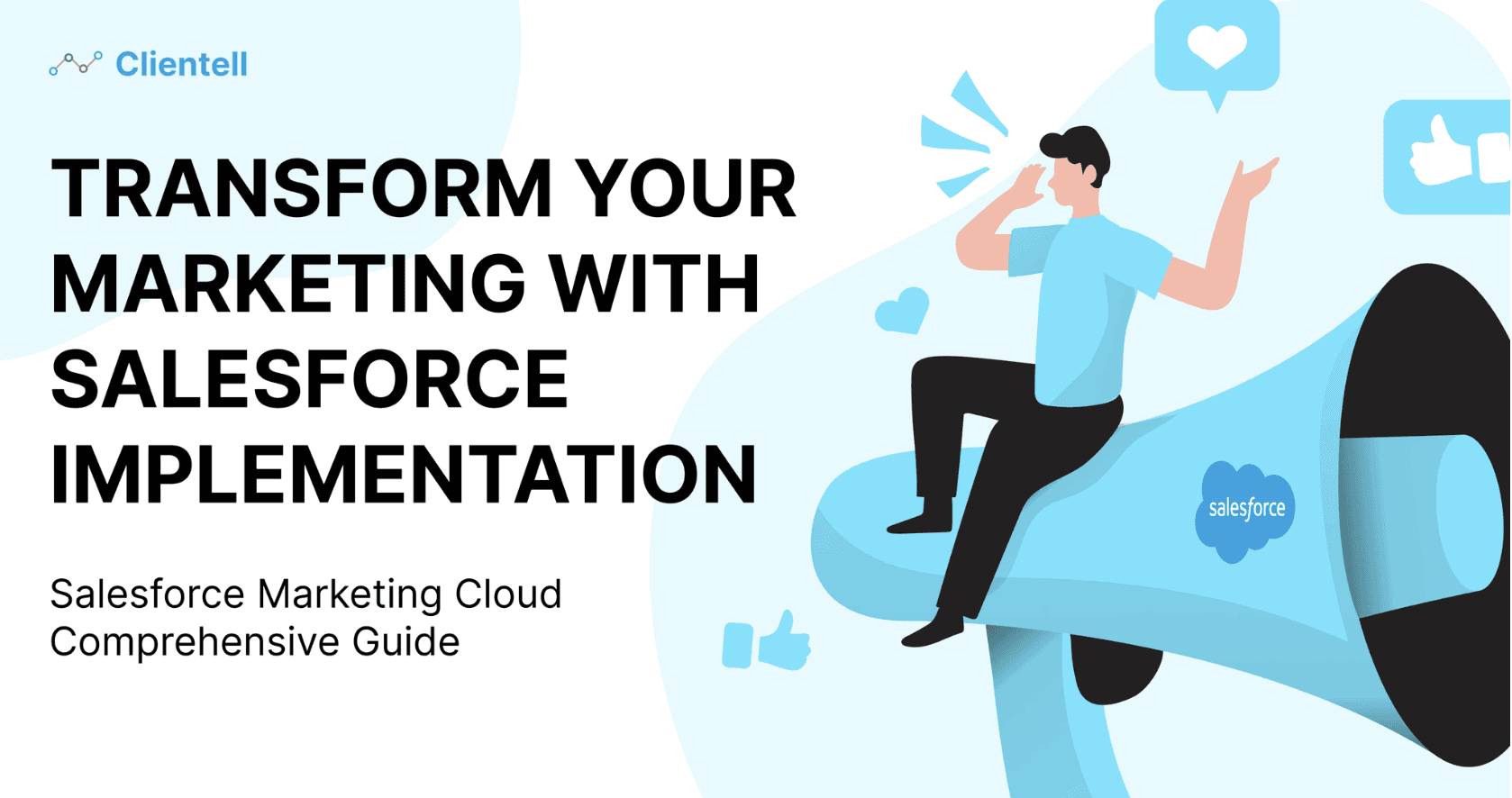"Data is the new oil." - Clive Humby
In the realm of RevOps, this quote rings truer than ever. Did you know that data-driven companies are 23 times more likely to acquire customers, 6 times as likely to retain customers, and 19 times more likely to be profitable? With the rapid evolution of RevOps, the necessity for advanced technologies to manage and utilize data is paramount.
Have you ever wondered how some companies consistently outperform their competitors in revenue growth and customer retention?
RevOps is the heartbeat of any thriving organization, orchestrating the harmonization of marketing, sales, and customer success functions. Central to this orchestration is data – the driving force behind revenue growth and operational efficiency. However, leveraging this data effectively demands cutting-edge solutions.
Implementing advanced data loader technologies is crucial to navigating the future and maintaining a competitive edge. These tools are optional add-ons and essential components to future-proof your RevOps strategies.
Understanding RevOps and Its Challenges
RevOps is the strategic alignment of marketing, sales, and customer success operations to drive revenue growth. It's a holistic approach that ensures all customer-facing teams are synchronized and data-driven.
However, the journey isn't without obstacles.
Common Challenges
Data Silos: Isolated data pools hinder a unified view of the customer.
Inaccurate Forecasting: Poor data quality leads to unreliable revenue forecasts.
Inefficient Data Management: Manual processes consume time and are prone to errors.
The Role of Data in RevOps
Importance of Data:
Data is the backbone of RevOps, underpinning every strategy and decision. From tracking customer journeys to analyzing sales funnels, data is integral.
Data-Driven Decision Making:
Accurate, timely, and integrated data is the key to making informed decisions. It empowers RevOps teams to predict trends, understand customer behavior, and optimize strategies.
Know how you can leverage Salesforce insights to build your RevOps strategies like a pro!
Emerging Trends in Dataloader Technologies
AI-Driven Data Processing
AI-driven data processing leverages artificial intelligence to automate and enhance data handling. This leads to improved accuracy, reduced manual effort, and faster data processing.
Use Cases:
For instance, Salesforce uses AI-driven tools to clean and enrich data, ensuring their sales teams have the most accurate information. This results in more precise targeting and higher conversion rates.
Real-Time Data Synchronization
In RevOps, outdated data is a liability. Real-time data synchronization ensures that all teams have access to the most current information, enhancing collaboration and decision-making.
Technologies and Tools:
Tools like Fivetran and Stitch enable seamless real-time data synchronization, ensuring that data flows uninterrupted across all platforms.
Machine Learning for Data Integration
Machine learning (ML) is revolutionizing data integration by learning from data patterns and automating complex integration tasks. This minimizes errors and enhances efficiency.
Case Studies:
Amazon employs machine learning for data integration, enabling it to personalize customer experiences and optimize supply chain operations. Their success underscores the transformative potential of ML in RevOps.
Implementing Advanced Dataloader Technologies
1. Plan: Define Your Goals and Create a Roadmap
The first step in implementing advanced dataloader technologies is planning. This involves:
Setting Clear Objectives: Identify what you want to achieve. This could range from improving data accuracy to enhancing forecasting capabilities.
Mapping Out Processes: Understand your current data processes and pinpoint where improvements are needed.
Creating a Roadmap: Develop a step-by-step plan detailing how you will implement these changes, including timelines and milestones.
2. Choose Tools: Select the Right Dataloader Technologies
Once your plan is in place, the next step is choosing the right tools. Consider:
Compatibility: Ensure the tools are compatible with your existing systems.
Scalability: Choose technologies that can grow with your business.
Vendor Support: Opt for vendors that offer robust support and continuous updates.
Integrate: Implement the Tools, Ensuring They Work Seamlessly with Your Existing Systems
Integration is critical. Follow these steps:
Pilot Testing: Start with a small-scale implementation to test the waters.
Full Deployment: Roll out the tools across the organization once the pilot phase is successful.
Training: Provide comprehensive training to your teams to ensure they can effectively use the new tools.
1. Test: Conduct Thorough Testing to Identify and Resolve Any Issues
Testing is vital to ensure the smooth functioning of new technologies:
Initial Testing: Conduct tests during the integration phase to catch any immediate issues.
Ongoing Testing: Continuously test the systems post-deployment to identify and resolve any emerging problems.
User Feedback: Gather feedback from users to understand their experiences and identify areas for improvement.
Optimize: Continuously Monitor and Optimize the Processes
Optimization is an ongoing process:
Regular Monitoring: Keep a close eye on the performance of the new technologies.
Data Analytics: Use analytics to understand how the new tools are impacting your RevOps.
Continuous Improvement: Make adjustments and improvements based on your findings to ensure the tools are delivering maximum value.
Benefits of Advanced Dataloader Technologies for RevOps
Improved Accuracy:
Advanced dataloader technologies significantly reduce errors, ensuring data accuracy. This, in turn, enhances decision-making.
Enhanced Efficiency:
By automating data processes, these technologies free up valuable time, allowing teams to focus on strategic initiatives.
Better Forecasting:
High-quality, integrated data leads to more reliable forecasting, helping organizations to better predict and plan for the future.
Scalability:
These technologies support the growth of your RevOps strategies, ensuring that they can scale with your business.
Case Study: Slack's Journey with Advanced Dataloader Technologies
Background:
Slack, the popular collaboration tool, faced significant challenges in managing their rapidly growing user data. With multiple teams accessing different datasets, data silos became a critical issue. Additionally, manual data integration processes led to inefficiencies and inaccuracies, affecting their overall revenue operations.
Solution:
Slack implemented an AI-driven data processing solution combined with real-time data synchronization tools like Fivetran. They also integrated machine learning algorithms to streamline data integration processes.
Outcomes:
Improved Accuracy: Data discrepancies dropped by 40%, providing teams with reliable and consistent information.
Enhanced Efficiency: Automation reduced manual data handling time by 50%, allowing teams to focus on strategic tasks.
Better Forecasting: With high-quality, integrated data, Slack improved its revenue forecasting accuracy by 30%.
Scalability: The new technologies supported Slack's rapid growth, seamlessly scaling as its user base expanded.
Future Outlook
Technological Advancements:
The future of data loader technologies is bright, with advancements in AI and ML paving the way for even more sophisticated tools. These innovations will further enhance data accuracy, integration, and real-time processing.
Staying Ahead:
To stay ahead, continuously evaluate and adopt new technologies. Keep an eye on industry trends be willing to adapt your strategies, and build a successful Revops Team.
RevOps is evolving, and advanced data loader technologies are at the forefront of this transformation. By embracing these tools, you can overcome current challenges, enhance efficiency, and drive revenue growth.
Evaluate your current RevOps strategies and consider implementing advanced data loader technologies. Stay ahead of the curve and ensure your organization's success in an ever-changing landscape.
Implementing advanced data loader technologies is not just about staying current—it's about future-proofing your business and setting it up for long-term success. So, are you ready to revolutionize your RevOps strategy? The future awaits!





